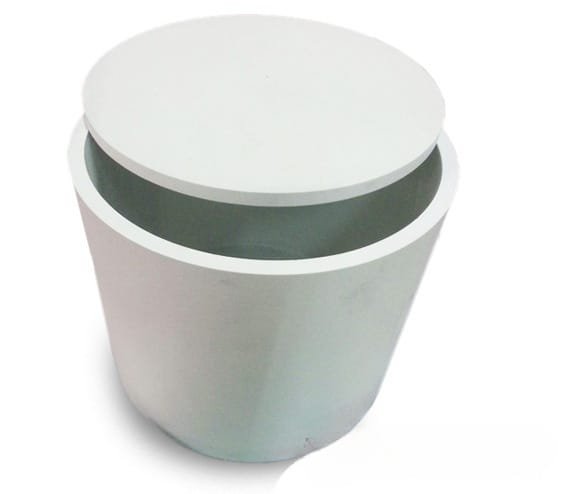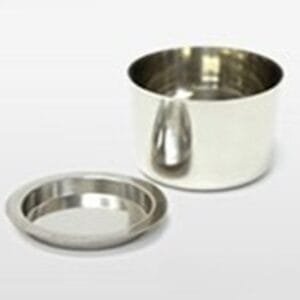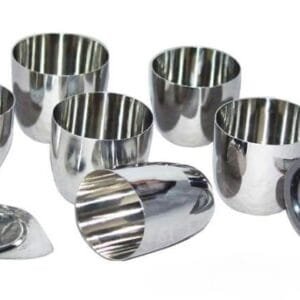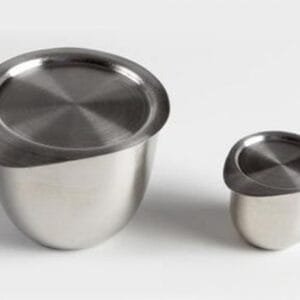Boron Nitride Crucibles Overview
Boron nitride crucibles, produced by TFM, are made from ceramic boron nitride (BN). These crucibles are celebrated for their superior thermal properties, including high heat capacity and excellent thermal conductivity. They also feature a low dielectric constant and outstanding dielectric strength. Additionally, BN crucibles are easy to handle and are non-adhesive, making them a highly versatile material with numerous applications.
Boron Nitride Crucible Specifications
| Compound Formula | BN |
| Molecular Weight | 24.82 |
| Appearance | Black solid in various forms |
| Melting Point | 2973 °C |
| Density | 2.1 g/cm3 (h-BN); 3.45 g/cm3 (c-BN) |
| Solubility in H2O | Insoluble |
| Refractive Index | 1.8 (h-BN); 2.1 (c-BN) |
| Electrical Resistivity | 13 to 15 10x Ω-m |
| Capacity | 25ml, 55ml, 75ml, 100ml, 1000ml, and customized |
Available Shapes and Customization
TFM provides a range of custom shapes and dimensions for boron nitride crucibles. The available shapes are described by the following parameters:

- A: Top Diameter
- B: Height
- C: Bottom Diameter
For customized solutions, please reach out to us with your specific requirements.
Materials Used for Boron Nitride Crucibles
| Material | Description | Availability |
| BN99 | Hot pressed at high temperature (1900C). Excellent corrosion resistance and thermal conductivity. Limited wear resistance Self-bonded and high purity (>99%) | Machinable Blanks Finished Parts |
| BNBO | General purpose material Bonded by boric oxide | Finished Parts |
| BNCB | Calcium borate bonded boron nitride Enhanced moisture resitance | Finished Parts |
| BN60 | BN 60%, SiO2 40% | Finished Parts |
| BN40 | BN 40%, SiO2 60% | Finished Parts |
| ZSBN | BN-45%, Zr2O3 45% | Finished Parts |
Typical Applications
TFM’s boron nitride crucibles are ideal for high-temperature applications in vacuum environments due to their excellent corrosion resistance and electrical properties. Common uses include:
- Crystal growth crucibles
- Break rings for horizontal casting machines
- High-temperature furnace insulators
- Electric insulators in vacuum systems
- Feedthroughs for high-voltage equipment
Packaging and Delivery
Our BN crucibles are meticulously tagged and labeled to ensure easy identification and quality control. We take great care to prevent any damage during storage and transportation.
Contact Us
For inquiries about pricing or to learn more about TFM’s high-quality boron nitride crucibles, please contact us. We offer a variety of forms, purities, and sizes to meet your needs.





Reviews
There are no reviews yet.